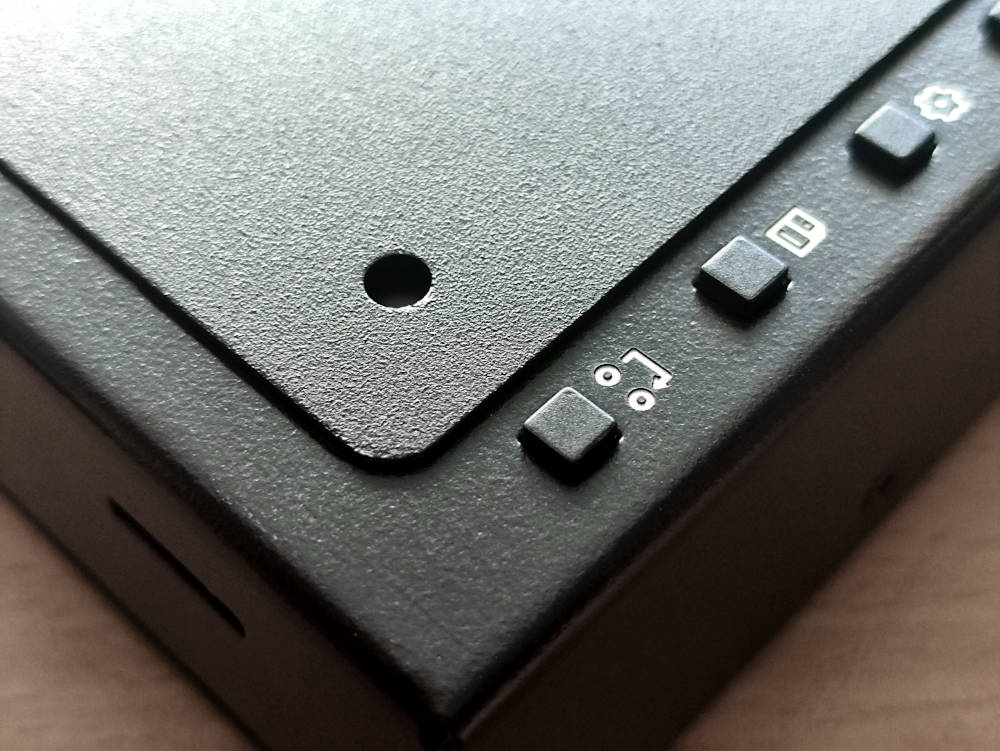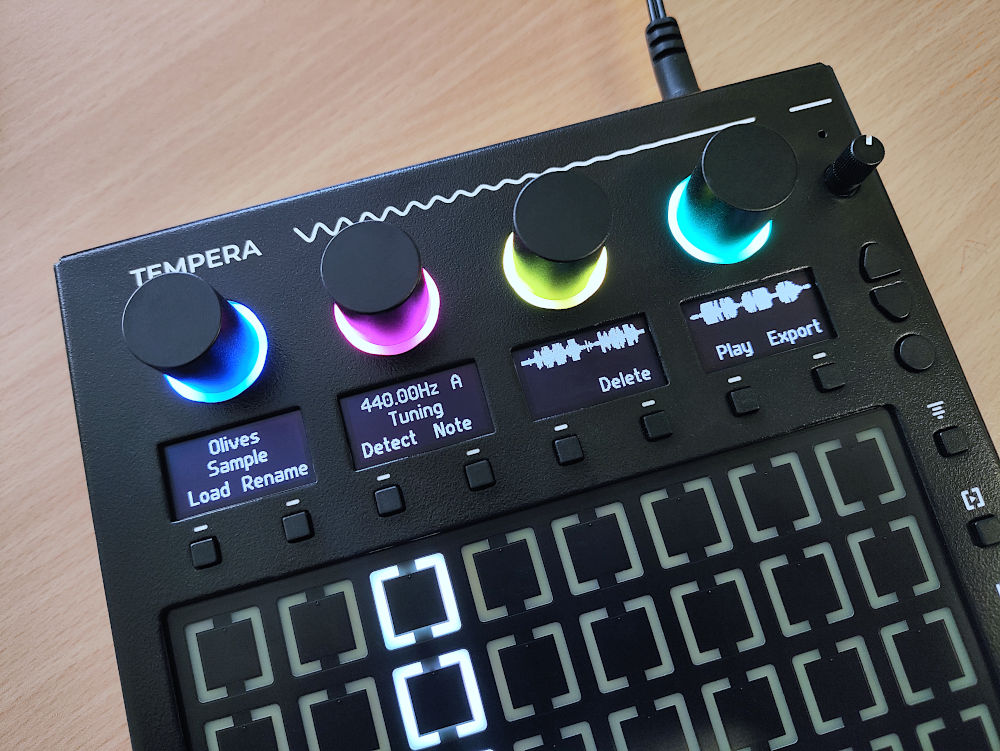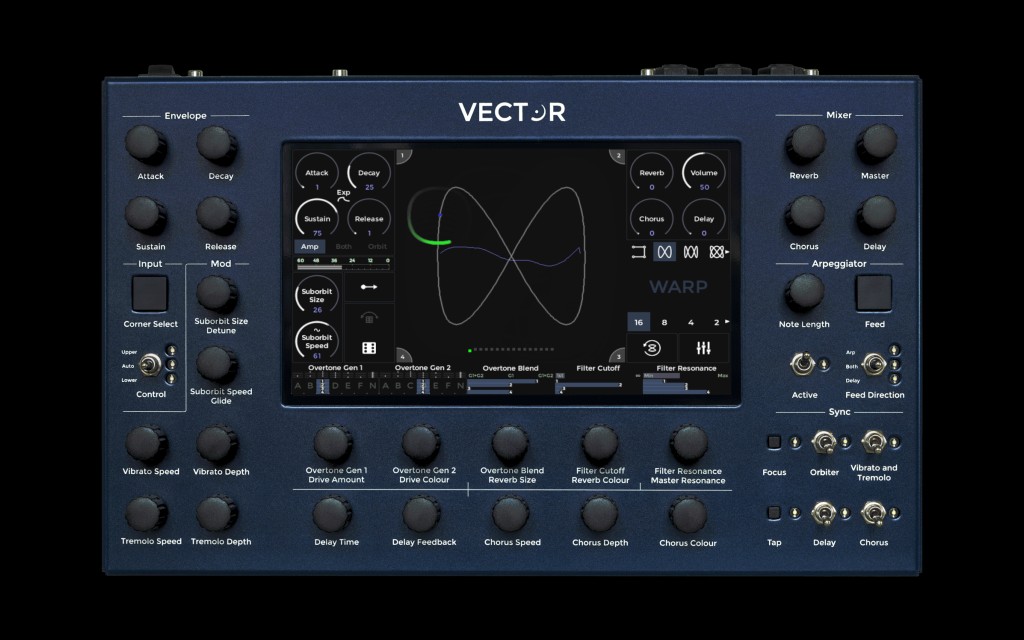Dear friends,
as hot summer months are slowly passing by, our Prague workshop has been pretty busy working on all axes. Since there's now two products to care for, there's more things to do, more PCB wiring and more code to siphon through, but there's a silver lining in that when we're too deep in one thing and need some respite, there's always something to do on the other :)
We are Beetlecrab.audio
Another thing we're slowly dealing with is the inscrutable situation about our branding, which we have gotten ourselves into. Vector, VectorSynth Tempera, TemperaSynth Vector, Vectora Synth Temper. It's a mess. To get out of all this confusion we decided to adopt an umbrella for both existing and new upcoming projects: beetlecrab.audio. We couldn't quite figure out a suitable name but many of you started using this, so let's go with it. For now the website is a simple crossroad and will be improved over time. Both Vector and Tempera newsletters will be merged into one at some point, so if you're subscribed to both you may have received this email twice. Please ignore the other.
Now to the actual news. There's two parts here -- an update about how Tempera production is going, and announcement of the new Vector v2.9.1 firmware update. Let's start with -
Tempera Production Update

New upgrades
There's a few changes made to the hardware that we're comfortable sharing, now that they are verified. First, a great quality of life improvement: the TRS MIDI sockets are compatible both with Type A and Type B wiring! This means that you don't have to worry and fiddle with unmarked adapters -- both types will work.
Next, we were still a bit unhappy with the powder coat finish of the metal case. It's difficult to get right: each attempt at different color and paint structure takes a lot of time to test and verify because at least a piece of metal needs to be painted and sent to us for examination, and it takes even longer because of course the metal case manufacturer doesn't have all the paints in stock, and sometimes they have to buy a whole bottle just to use a few drops. A sample palette exists but as we already learned with Vector, these give some idea but in the end look nothing like what you think on the actual metal, on the bends, crevices and so on.
Having said all that, I think we found and verified a finish that we're really happy with. It's less glossy and has a finer and more granular (hah) structure. It's very nice to the touch and I think looks much better. See for yourself, how the light interacts with the old vs new powder coat on top. Noticeable are also the beautifully laser etched graphics. (Tempera in old finish, plate on top in new finish)

Built-in Canvases
Tempera has a somewhat peculiar way of playing and granularizing the samples, given its grid-but-not-really approach, and a parallel stack of 8 samples, all driven by 4 separate emitters, all triggered by a 16-voice polyphony. All this means that while it's a lot of fun to just load a sample a grain it around, the truly magical stuff comes out by using the adjacency of the loaded samples, and their grid-like splicing. This is why we're partnering up with a a few amazing sound designers who have agreed to supply Tempera with well thought out sample packs -- or as we call them: canvases -- to be bundled with Tempera for your enjoyment. Be prepared for really colorful textures made specifically for Tempera workflow, to explore and combine in really weird but intuitive ways.
Firmware
There have been a couple of new decisions made on the technological side, maybe most importantly that the main format for storing samples on Tempera shall be FLAC. It is lossless, takes up less space, is an open format, allows for bundling metadata like sample authorship, but also can include useful information such as the base tuning of the sample (for samples without such metadata there is an onboard pitch detector on Tempera and it can work with any sample tuning, so when you play a voice on a keyboard, Tempera will always play the sample pitched as expected). The use of FLAC will stretch the builtin 8GB storage much further than if Tempera used WAV files. For interfacing with the outer world, Tempera still supports loading a vast array of audio formats, including wav and a lot of others.

A steady progress implementing all the announced features is taking place. The most challenging task is resist the temptation of adding more and more layers of complexity. To add this or that, especially when it piles up and starts to clutter the workflow. A basic rule of thumb is that we add a new feature only if it "expands the list", rather than convolute the existing process. For example, an extra LFO shape is great, while adding a whole new automation layer is tempting but for now would only be a distraction. So at this point the focus is on having the core functionality smooth and stable, there will be plenty of time adding new ideas later.
Over time there's a few questions that have been asked repeatedly, so let's clarify them for those who were too shy to ask in a FAQ form:
- Can Tempera be used in part as a simple looper and in part as granular?
Yes, each emitter can be configured to produce any amount of grains per time in any length. So, an emitter set to repeat and density of 1 functions like a simple sample player. - How long can the samples be?
It is possible to load an audio file of "any" length, but on loading a part of it into a track is limited to around 12s - There's a headphones output, main L and R output, and stereo input jack. How come only 3 jack sockets on the back?
The first socket can switch between being Main L, or Stereo Headphones (there's a relay inside that you can hear click-clack!). The second is Main R, the third is Stereo Input. - How are samples and canvases organized, is it possible to take them out of Tempera?
Tempera uses a normal folder structure for categorizing and nesting canvases and samples. A canvas is simply a folder with a bunch of properly named FLACs and a textfile with parameters, which can be saved onto the SD card or an inserted USB flashdrive. - What audio inputs does Tempera work with?
We have successfully tested a dynamic microphone, an electric guitar and a few synthesizers. - What should be the root note of imported sample?
Any. If there is no tuning information provided in the metadata, you can set it manually on device, or run the pitch detector. We recommend 220Hz or 110Hz A, at 120BPM if there is a rhythmic component.
Deliveries and what's next
As we wait for the various components to manufacture and arrive, a lot of work also takes place on the assembly and logistics side. We need to make sure that once everything is here we will not get bogged down looking for which box has XY thing that is needed at current assembly stage. The Tempera is quite a bigger operation than Vector, so we're stepping up our game :)
Also Tempera will be soon entering beta/playtesting to iron out all common workflows: I know some of you will focus on percussive, some on ambient, some on re-sampling, live looping or octatimbral wavetable-like polyphonic play. So far we're confident that the interface allows to comfortably do any of these. Keeping it simple.
So far everything suggests that the first batch will start shipping in November.
If you aren't on board yet, Tempera preorders for the 2nd batch are open ;-)
Vector v.2.9.1

We've prepared a nice firmware update and this time we teamed up with Oliver Torr, a Prague and Athens based sound designed and composer. You can check out his work here and here. First let's go over bug fixes and improvements:
Thanks to the wonderful community at Vector Space , we managed to fix some annoying bugs, and implement a few feature requests. Here's a changelog:
- Sometimes weird behaviour of envelopes is fixed
- Corner copy-pasting is fixed
- Arp not playing from the first step on midi play/continue should be fixed
- Fixed occasional and very random hang/crash
- A few related and unrelated bugs squashed along the way
- A few graphical tweaks increasing contrast and clarity
- The oscilloscope code was reworked and shows the whole waveform when playing a detuned Generator
- The parameter popup is nudged up so it doesn't hide the oscilloscope
- Weird behaviour when modulating Suborbit Speed is fixed
Now to the main event: a new page of sounds! They are moody, dense, opinionated, dramatic and fun to explore. It's amazing what sounds can come out of an instrument that doesn't use wavetables or samples! Here's a small promo video :)
[Please click on "View in browser" at the bottom if there's no video embed here.]
As always, the firmware update is available to all Vectors all the way to the first batch. We recommend updating your machine through ethernet, but a USB option is also available. See instructions here. We're excited to see what you do with them, and when you do, come show us!
That is all for this time, and we're excited to see what's next :)
Best regards,
Beetlecrab crew
